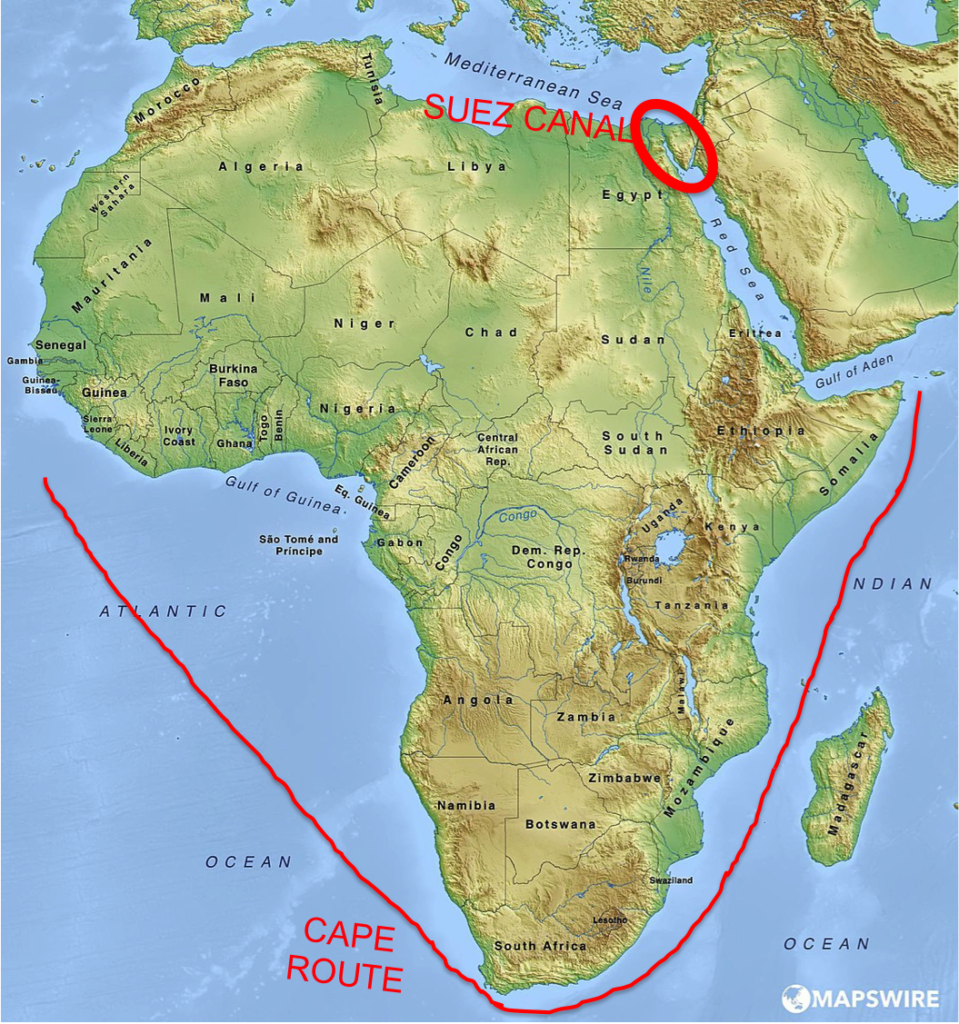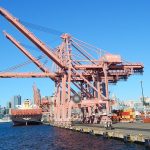Red Sea Crisis Getting Worse Not Better
Shippers should make no plans for a return to ocean freight routes through the Suez Canal in the near future.
Crew Must Abandon Ship After Houthi Attacks
Perhaps the most damaging attacks in the Red Sea area so far happened on Sunday. Iran-backed Houthi rebels executed missile attacks upon a cargo ship in the Gulf of Aden, forcing the crew to abandon ship. There are conflicting reports, but the Houthi rebels claim they sank the ship. If it was not fully sunk, it certainly was taking on water and damaged badly enough that the crew had to evacuate. By all reports, the whole crew made it out and have been escorted to safety.

David Gritten & Joshua Cheetham reported in the BBC that the cargo ship was the Belize-flagged and British-registered Rubymar. They wrote that the UK government “condemned the attacks as ‘completely unacceptable’ and said the UK and its allies reserved the right to respond appropriately.”
Military Responses Only See Escalation Thus Far
So far, US and UK responses to Houthi attacks, largely in the form of air strikes, have obviously not stopped the attacks from continuing. It doesn’t even seem like they have slowed the Houthi attacks down at all.
According to the BBC article:
The Houthi movement’s spokesman also claimed its forces had attacked two US-owned cargo vessels, the Sea Champion and the Navis Fortuna, in the Gulf of Aden.
He added that Houthi air defences in the Red Sea province of Hudaydah had shot down a US MQ-9 Reaper unmanned aerial vehicle (UAV) “while it was carrying out hostile missions against our country on behalf of [Israel]”.
The Houthis’ evil anti-Jewish agenda of violence in the Red Sea began with attacks on ships that were somehow linked to Israel, even if it was old and out-of-date intel sometimes used to connect the ships to Israel. UK- and US-linked ships quickly became targets as well. Whether that was initially because the UK and US are ally countries of Israel or because they were protecting ships in the Red Sea is hard to tell.
Ultimately, no ships can truly feel safe in the Red Sea or Gulf or Aden. However, showing some sort of alignment with values of Iran and the Houthi might help secure passage. For example, Patrick Sykes reported in a Bloomberg article about a ship that changed its call sign to “All Crew Muslims” in order to safely sail through.
Of course, no one should want to align with the Houthi terrorists, whose attacks appear to be getting even more extreme.
Increasing Attack Capabilities
Gritten and Cheetham reported on newly discovered abilities for the Houthi rebels to execute “swarm attacks”:
US Central Command said its forces had carried out five strikes against three mobile anti-ship cruise missiles, one unmanned underwater vessel (UUV) and one unmanned surface vessel (USV) in Houthi-controlled areas of Yemen on Saturday after determining that they presented an imminent threat to US Navy ships and merchant vessels in the region.
It was the first time that US forces had identified a UUV, or submarine drone, being employed by the Houthis since the attacks began.
BBC security correspondent Frank Gardner says the discovery that the Houthis are deploying both USVs and UUVs is a worrying development. The concept of a “swarm attack” – launching a number of relatively cheap missiles and drones simultaneously at an enemy in the hopes of confusing and overwhelming their defences – is straight out of the playbook of the navy of Iran’s Revolutionary Guards.
It’s not surprising the Houthi would take strategy out of Iran’s playbook as Iran backs the Houthi, as well as Hamas and other terror organizations in the region. Under the Biden Administration’s watch, Iran has had a great deal more money for funding such terrorists, including ones who’ve made direct attacks on, and killed, U.S. soldiers. In apparent pursuit of an Iran nuclear deal that it’s hard to believe would be worth the paper it’s written on, the administration has softened sanctions, extended sanction waivers, and either failed or have not bothered with sanction enforcement on Iran. The results have been billions upon billions of dollars pouring into Iran’s coffers.
Thus, there’s a near unlimited funding source for the Houthi to continue attacks in the Red Sea. At this moment, there’s nothing to give any confidence they will stop anytime in the near future.
Ocean Freight Planning Looking Forward
The strategy carriers have mostly taken of diverting ships away from the Gulf of Aden, Red Sea, and, therefore, Suez Canal, will definitely continue. Perhaps I should say continue indefinitely. Attacks on container ships that do dare to sail the area, like the Rubymar, reinforce the decision to move ocean freight away from the sea portal that previously was traversed by about 12% of global ocean shipping.
Carriers currently have overcapacity, which helps absorb the problem of needing more ships to cover the same global shipping services because of the increased amount of sailing time in avoiding the Suez Canal. But perhaps a bigger danger is the availability of shipping containers.
One of the biggest factors during the pandemic’s supply chain crisis was maldistribution of shipping containers. Hundreds of blanked (cancelled) sailings at the beginning of the pandemic caused shipping containers to be in the wrong places in the world. Soon, carriers would deny containers to some shippers, like U.S. agricultural exporters, in favor of sending empty containers faster to more lucrative shipping routes. Hundreds of ships now redirected with longer shipping routes runs the risk of similar issues appearing with the availability of shipping containers.
At least shippers have gotten some good news recently with improvement at the Panama Canal. That gives some relief to the situation, as simultaneous disruption at the two canals presents incredible levels of difficulty for ocean shipping. So shippers really needed that relief. For now, they should be looking down the road, even to the peak season, without expecting relief at the Suez Canal. Shippers should plan on not being able to utilize the Suez Canal for the foreseeable future.





